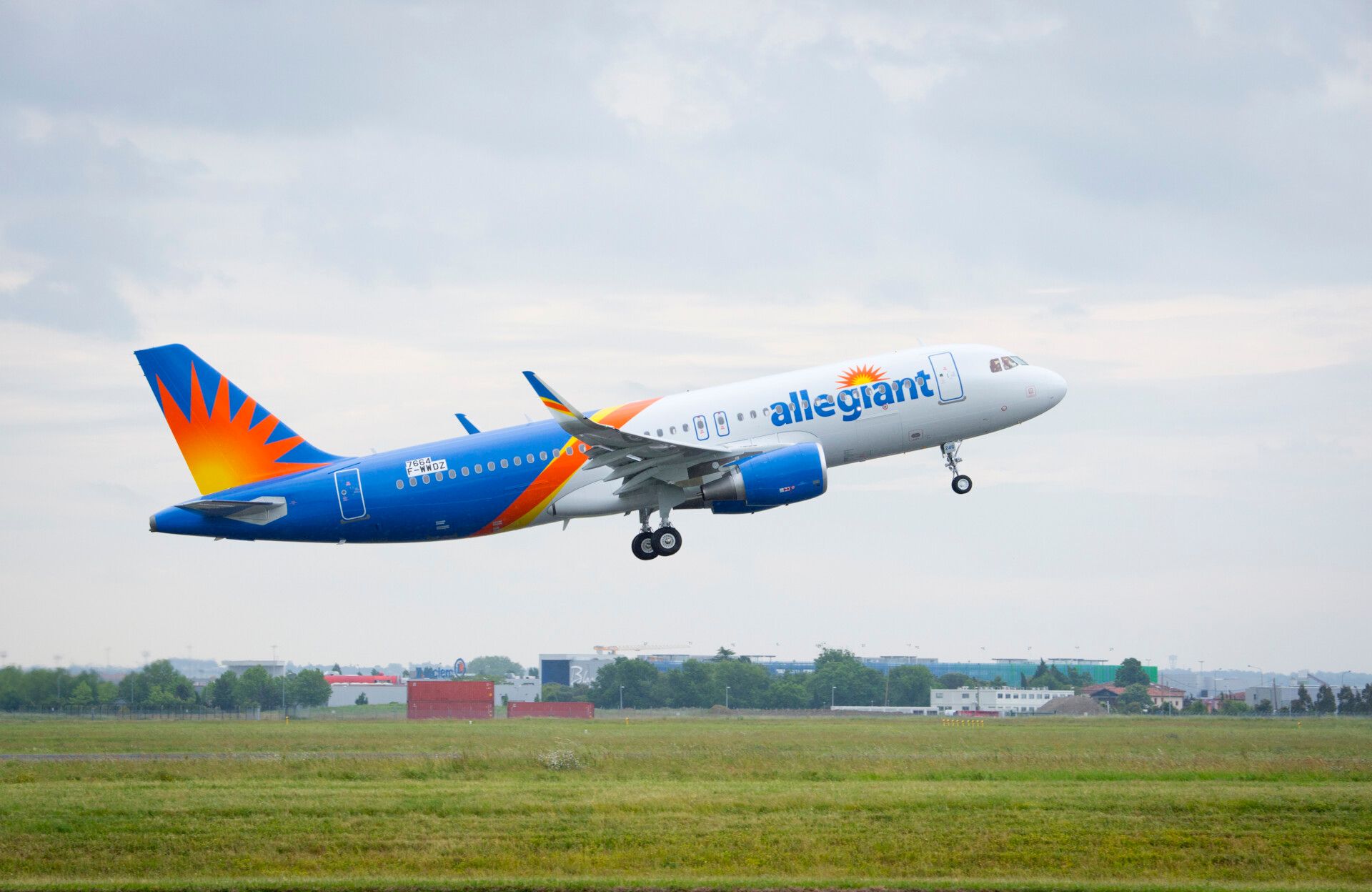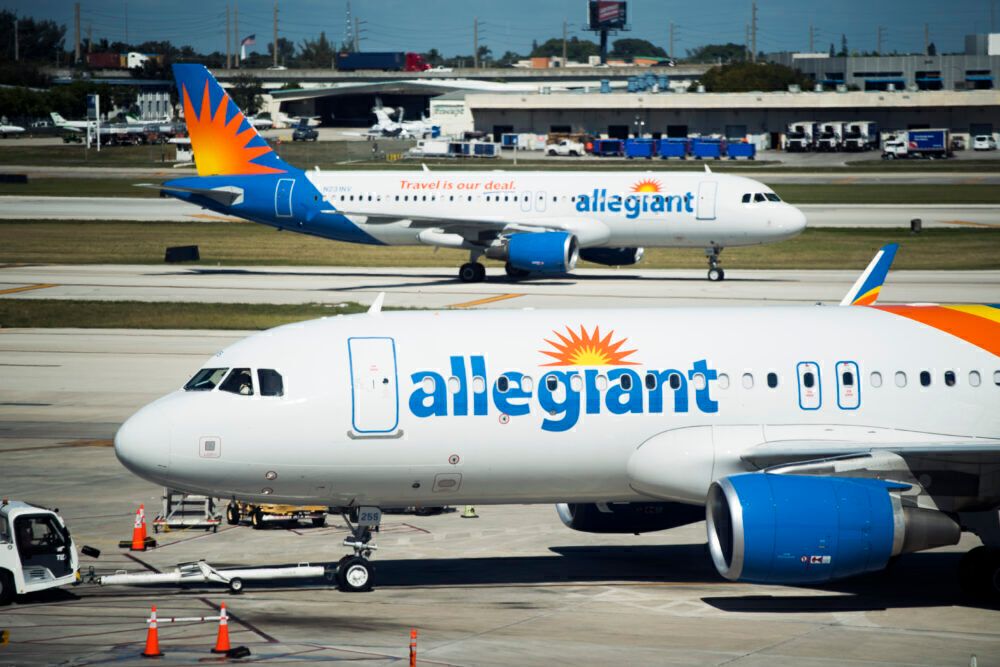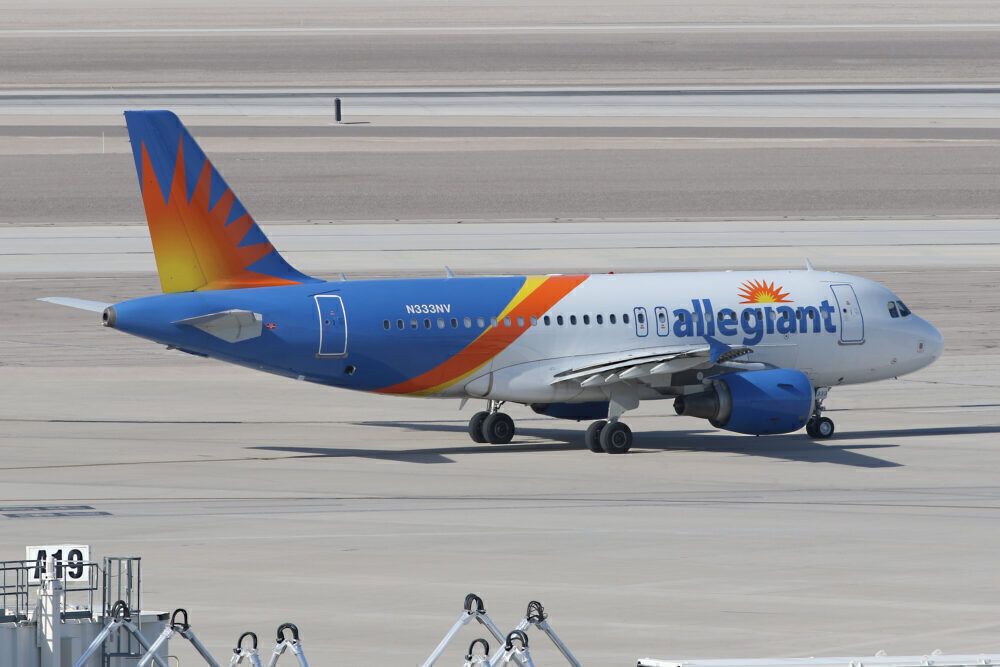Allegiant Air has reported a solid end to 2021 despite headwinds. With capacity and passenger counts beating out 2019 numbers, the airline is confidently looking ahead to the remainder of the recovery and the rollout of its growth strategy buoyed by recent major deals.
Allegiant's strong end to 2021
In December 2021, Allegiant carried 1,320,403 passengers, which was up 0.9% over December 2019 on capacity measured in available seat miles (ASMs) up 10.3%. However, the airline's system load factor was down to 78.8%, which was marginally lower than the 82.6% it recorded in December 2019. The December numbers came after a strong November that similarly beat out 2019.
As for the fourth quarter of 2021, covering October through December, Allegiant's passenger count compared to the fourth quarter of 2019 was up 4.4% to nearly 3.7 million, up to 3.5 million. This was on capacity up a whopping 14.5% for the quarter over 2019. However, the airline still saw a slip in load factor from 82.1% in 2019 to 77.1% in 2021.
Drew Wells, senior vice president of revenue, stated the following on the results:
"Despite a challenging operating environment during the Christmas holiday peak-period, we ended the quarter with a load factor of 78.8 percent, the highest since the onset of the pandemic. Although Omicron led to an uptick in customer cancellations, daily booking trends throughout the quarter consistently outperformed levels observed in 2019. This strength in bookings resulted in total operating revenue of roughly $496 million for the quarter, an increase of more than 7.5 percent when compared with 2019."
Leisure leads the way
Leisure travel continues to be the top source of traffic for airlines. Leisure passenger counts and yields have routinely been above 2019 levels, according to reports from nearly every airline. As Allegiant noted, this impacted the carrier's bottom line.
Allegiant Air operates on an ultra-low-cost model. It sells unbundled fares for point-to-point travel targeting leisure-oriented customers. Even though Allegiant only flies most of its routes a few times per week, the financial results and marginal decrease in loads despite double-digit capacity increases indicate that Allegiant did not necessarily have to engage in price stimulation or sacrifice yields.
This was further evidenced by Gregory Anderson, executive vice president and chief financial officer, who discussed the following on the carrier's fourth-quarter expected earnings before interest, taxes, depreciation, and amortization (EBITDA):
"Despite operational challenges around holiday peak travel, we expect an adjusted EBITDA margin for the fourth quarter of roughly 19 percent. This margin includes nearly $23 million of irregular operations costs incurred during the quarter, the majority of which were incurred in December. Operational challenges were predominantly a result of crew shortages related to Omicron. Although these challenges continued into early January, we are beginning to see relief and expect significant improvement in the operation as the Omicron variant begins to dissipate."
Allegiant looks ahead
Allegiant was one of the first US airlines to officially move on from the crisis. Starting from the first quarter, the airline started adding capacity, new routes and started thinking about the airline's place in the marketplace post-crisis. Other airlines are still trying to navigate a return of capacity and schedules.
These numbers help contextualize why Allegiant has made some of the recent moves it has. For example, in December, it announced an unorthodox partnership with Viva Aerobus in Mexico to create a transborder ultra-low-cost joint venture designed to grow both carriers' opportunities to grow between Mexico and the United States offer more low-cost service.
Allegiant has shown that it can enter new markets and launch new routes without compromising on success. While there were some residual effects of the pandemic pushing loads down, the airline's load factors and anticipated margins show that it can successfully grow into new markets. The transponder joint venture with Viva Aerobus will help expand those opportunities to the international sphere.
Most recently, of course, the Boeing 737 MAX order is setting up Allegiant for some incredible growth. With 50 firm orders and 50 options, Allegiant will be turning to mixed-fleet operations. However, it will not necessarily sacrifice its ultra-low-cost model and continue expanding its low frequency, low utilization model to more cities and routes across its network.
The MAX will also unlock new opportunities and perhaps longer-haul routes for Allegiant. In December 2021, Allegiant's average scheduled service stage length grew 3.6%, indicating that a sizable proportion of Allegiant's capacity increases were on longer routes, and the performance of the Boeing 737 MAX family could push Allegiant to try plenty of new strategies.




